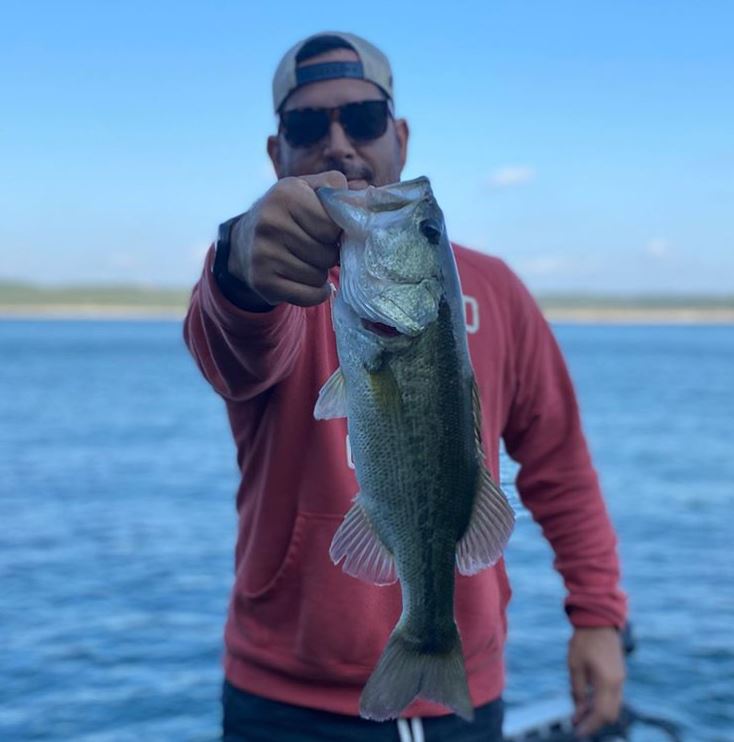
Bass fishing in Central Texas during the fall can be challenging when the bass aren’t exactly where you expect them to be this time of year. Ask any angler; fall fishing is working fast baits in the backs of coves where the bass are chasing shad and you’ll load the boat! Well, that may have been true in past years when September cold fronts signaled the beginning of fall, and the water temp drops to the lower 70s and stays there. However, 2020 has been the hottest year on record, and the water temperatures on Lake Travis are still pushing 80 degrees in mid-October!
During my morning trips, we have been throwing a wide range of moving baits such as spinnerbaits, poppers and spooks with limited success. We’ve been focusing on the smaller coves that are located very close to deep water, right off the main lake. After catching a few smaller bass where the bass should be feeding, we can quickly troll to the point or main lake walls to catch the bigger bass that are still hanging out close to deeper water by throwing one of my top three baits: drop shot, ned rig, shaky head. This is been a consistent pattern since late summer. The key has been to fish very slowly and to not overwork the bait. You really want to feel the bait pulling through the brush and bouncing off the rocks.
For my afternoon trips, we are pretty much fishing deep water main-lake docks. The boat traffic has died down significantly since Labor Day, and we can easily get behind these docks to fish without having to battle the wake of dozens of other boats. If the sun is up, the bass are under the docks and walkways behind the docks. We’re able to pull two or three bass off each dock and move to the next one, doing this without ever making contact with privately-owned docks. For our best run a few weeks ago, we pulled twelve bass off a series of six docks with several bass pushing four pounds!
So why are the bass still hanging out close to their summertime locations, and not feeding in the backs of the coves? Bait and water temperatures are the two key factors that drive bass behavior. The bait is still suspended off the bluff walls and marinas in 40 to 60 feet of water. I’ve seen very little bait in the backs of coves on days that I scout around for new water to fish. However, you can pull up to any deep bluff wall on Lake Travis and see thousands of glass minnows and bluegill hiding in the shadows. Until the water temp drops below 75 again, the bait isn’t going to commit to move back into the coves. Once they do, the bass will surely follow.
This time of year, it’s good that have a good lineup on deck. I’ll have several reaction baits ready to go: a spook, a medium diving crankbait 5 to 8 foot, and a spinnerbait. These are the baits I’m starting with around the bluff walls, points, and the brush that leads into the coves. I’ll work one side with reaction baits then switch over to finesse baits on the way out. My top three go-to finesse baits are: the drop shot, ned rig, and shaky head. We may catch one or two bass on the way in, but we’re catching 5 to 10 bass on the points and bluff wall just outside the cove. At some point, the patterns will switch, and you’ll be able to figure out pretty quickly what the bass want to eat with the approach.
Follow @fishingwiththefriz on Instagram and let us know if these tips help you have a successful trip on the water!